Architectural Dictionary | W
Wafer-board – A building board made up of random flakes of wood, which are pressed flat and bonded with synthetic resin adhesive. It has two smooth faces and is similar in performance to plywood.
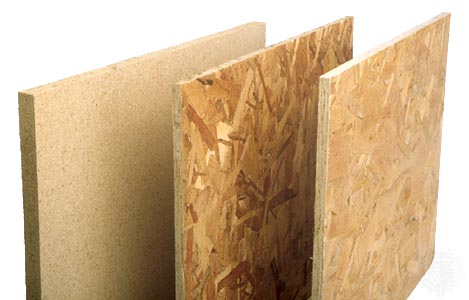
Waffle form – A square pan form.
Waffle slab – The most usual coffered slab, one in which the recesses are square on plan.
Wainscot – Wooden lining, usually panelled, applied to the walls of a room usually upto dado height
Waist – The narrow part of a long object, in particular the least thickness of a reinforced concrete stair slab.
Walk-in – A cold store.
Walk-in wardrobe – A small room used for hanging clothes.
Walking line – The most usual path up a stair for one person at a time, and the place where the going is measured, usually 450 mm from the inside handrail.
Walkway – A path for walking, such as a catwalk or bridge for access to mechanical services, boards across a roof or gutter, or a covered walkway.
Wall – An erection of brick, stone, etc for the purpose of fencing and security: the side of a building.
Wall anchor, joist – A steel strap screwed to the end of every second or third common joist and built into the brickwork to ensure that the joists give lateral support to the wall. It is fixed to the same joists as the strap anchors.
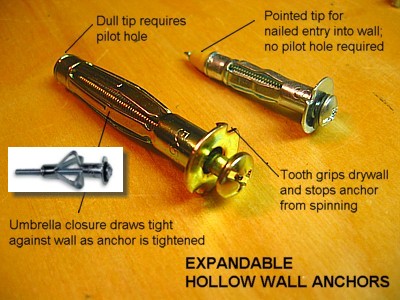
Wall covering – A covering on a wall, such as vinyl or paper wallpaper, melamine laminate and stretched coverings.
Wall form – One of two shutters held together with form ties, as formwork for a concrete wall.
Wall hanger – A joist hanger partly built into a wall
Wall hook – A flat spike with a turned up head, driven into a wall bed joint as a heavy fastener and used for shores or to carry a pipe.
Wall joint – A hidden mortar joint parallel to the face of a wall.
Wall outlet – A socket outlet on a wall.
Wall paper – Printed-paper or vinyl sheet with a plain or decorated surface, textured or embossed, used as a wall covering.
Wall plates – A horizontal timber along the top of a wall at eaves level.
Wall string – The string on the side of a stair next to the wall, as opposed to the outer string.
Wall tie cavity – A fastener across a cavity wall to hold the two leaves together. It is made of stainless steal or galvanized steel wire or strip, or of plastics, and has a twist or bend near the middle to form a drip so that water cannot pass.
Wall tile – A glazed ceramic tile, for use as an easily cleaned finishing on walls in wet areas, such as showers and bathrooms, or splash backs behind sinks or basins.

Wall unit – A cupboard hung on a wall. Its doors should open either above the tallest persons head
Wallboard – Building boards made for surfacing rather than for insulating ceilings and walls. Wallboards include plywood and other plasterboard, and glossy laminated plastics glued to a backing of hardboard or plywood. Other panel products are used on walls.
Wall-column – A concrete or concrete encased steel column partly engaged within the thickness of a wall.
Wall-hung basin – A washbasin fixed to wall, usually on brackets. A splash back normally protects the wall surface behind the basin.
Wall-hung boiler – A gas boiler mounted on a wall, of very lightweight because of its low water content. It often has a balanced flue and can be indoor or outdoor.
Wall-hung lamp, bracket – A luminaire supported clear of a wall on a bracket, which is often a curved tube with the wiring inside.
Wall-hung WC Pan – A water closet on cantilever brackets or chair carriers. It allows free access to the floor for cleaning. The cistern may be concealed in the wall or be a part of a matching suite.
Walling Mason – A mason who sets stones in the walls, bridges, etc., cutting them to match with a scutch.
Walnut – A very decorative hardwood, mainly from southern Europe. The English variety has a finer figure and colour, but is rare. Walnut is a wood with a grey background and dark, sometimes ruddy streaks, used for carvings, wood turning and veneers, in which its burrs and crotches are valued.

Wane, Waney edge – Bark, or the rounded surface under the bark on the sawn timber. Wane is a gross feature in visual grading.
Ward Cut – Metal cut away from flat key, so that it can pass the wards.
Wardrobe – A cupboard with hanging space for clothes.
Wards – Small metal bars in a lever lock, which ensure that only the right key can turn the lock.
Ware house set, air – The hardening of bagged cement from being stored in damp conditions.
Ware Pipes – Pipes of vitrified clayware.
Warm-air Heating – A rapid space heating system that blows warm air. Air can be ducted from a central heating boiler or blown out of a local unit heater, a fan coil unit, or an air curtain.
Warning Pipe – An overflow from a feed or expansion cistern that discharges safely outdoors, deliberately in a noisy and obvious way, to bring attention to a plumbing fault
Warp, warping – Any distortion of timber during seasoning as the moisture content falls, such as cup, bowing, spring and twist, from uneven shrinkage round or across the growth rings.
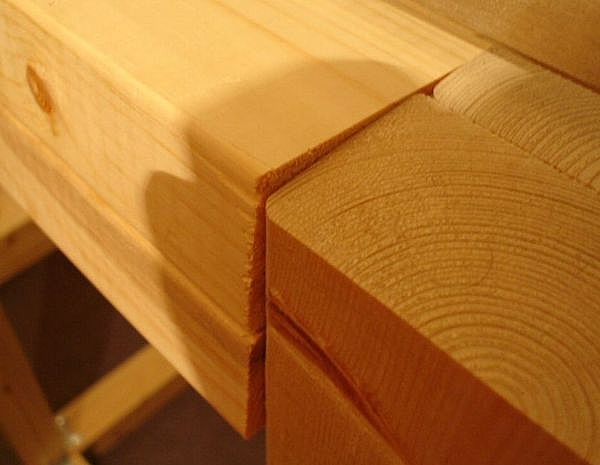
Wash Primer, Mordant – A pretreatment primer for cleaning new galvanizing before painting. The method was once out of favour
Washability – The ability of a surface of paint to withstand washing without damage, including the ease of removing dirt
Washdown Closet – The most common type of water closet, with a pan, flushing rim, and a single trap, normally with a horizontal outlet to take different pan connectors for a horizontal or vertical soil pipe
Washer – A flat ring made of rubber, plastic, leather or fibre, which is held by a nut to the underside of a jumper of a screwdown valve (or tap) to stop the flow of water and/or;
A steel ring to spread bolt pressure
Washleather Glazing – Glass bedded in simulated washleather instead of Putty, e.g. on swing doors. The fixing is by glazing fillet
Waste – Wasted material from cutting standard lengths or full size sheets to fit on site, the cost of which is usually described as cutting waste and/or;
A short threaded outlet pipe from the plughole of a basin sink or bath. It has a flange that goes on the inside, over a sealing washer, and a threaded tail to take flanged backnut on the outside, which is tightened to secure it. A trap is usually screwed on to the threaded tail and/or;
Waste Water
Waste appliances – Fittings which discharge only waste water, including baths, sinks, drinking water fountains etc.
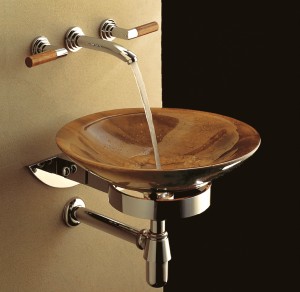
Waste branch – A gently sloping branch pipe to carry water away from a basin, bath or sink. It has a trap after the exit from the basin and discharges into a waste stack. A long waste branch may need a branch vent
Waste disposal unit – A unit for flushing away domestic waste
Waste stack – A vertical stack pipe for waste water. It carries discharge from the waste branches to the buried drains and is part of the sanitary pipework
Waste tail – A pipe tail on the outlet from a basin, bath, sink etc.
Waste water – Used water from sinks or washing, not containing soil water or industrial effluent
Waster – A mason’s chisel, either one with a claw cutting edge for wasting stone or a chisel 19 mm wide and/or;
A facing brick with minor defects or blemishes which is therefore downgraded to a backing or common brick
Wasting – Removing excess stone roughly with a waster before dressing a block as dimension stone and/or;
Spread and level
Water Blasting – Forcing a jet of water (with or without sand) out of a fine nozzle under very high pressure. Water blasting is used for blast cleaning, cutting masonry, producing an exposed aggregate finish, stripping lead paint, etc

Water Channel – A groove in a patent glazing bar to drain condensation
Water Closet, W.C – A toilet fitment usually made of vitreous china. The two main types of WC Pan are the Washdown and the siphonic closet, which have a flushing rim, a seat and cover, and can stand on a pedestal or be wall hung
Water content – Moisture content
Water curtain – Fire protection by a row of drencher sprinklers
Water Fittings – Plumbing fittings to stop or regulate the flow of water in a pipe, grouped as either stopvalves or discharge valves
Water gauge – A U-gauge containing water, giving a simple and reliable instrument for measuring very low pressures, for drain tests etc.
Water grain – A curvy attractive grain often seen in birch, mahogany etc.
Water hammer – A tapping sound in a water pipe which may occur when a tap is suddenly closed, causing the water column to vibrate
Water jetting – Water Blasting
Water-based paint – Emulsion paint or distemper

Weather tiling – Tile hanging
Weather-struck joint – A brick work bed joint that is jointed with a bricklayer’s trowel immediately after the bricks are laid, with an outward slope to throw rainwater off the wall
Wedge – A tapered piece of wood, used in timbering or centering e.g. a folding wedge
Wedge coping – A coping with one edge thicker than the other, thus with its upper surface sloping one way only
Wedging-in – Fixing the tuck-in of a flashing into a chase
Weephole – A small drain hole for water. In brickwork it is used above a damp-proof course (DPC) or cavity tray
Welt – A seam in supported sheetmetal roofing
Welted drip – Built-up roofing, felt turned down over the edge of a flat roof, hot folded under itself, bonded into the base sheet and nailed
Welted nosing – A junction in supported sheetmetal roofing in which a vertical sheet comes up under a horizontal sheet. They are folded together and dressed down the vertical surface
Wet and dry paper – Waterproof emery-faced sandpaper for wet rubbing
Wet blasting – Blast cleaning with sand and water, to reduce the danger of silicosis from dry sand blasting. It is used for cleaning masonry
Wet riser – A fire riser kept filled with water under pressure.

Wet rubbing – The fine flatting down of paint work using wet and dry sandpaper
Wet sprinkler system – The most usual sprinkler system, with water filled pipes
Wet trades – Trades that use concrete, mortar or plaster including brickwork and finishings such as screeds, terrazzo or tiling bedded in mortar. Completed work must be protected from frost and given time for curing. Before dry trades could start, construction moisture should be removed by drying out.
Wet-dash finish – Roughcast
Wheelbarrow, barrow – A barrow, usually having a single rubber tyre, two handles and a steel or heavy plastic container. It is used to move loose materials like bricks, mortar etc
Wheelhead – A handwheel
Wheeling step – A stair winder
White ant – A termite
White blob – Manifestation of new glazing
White cement – Portland cement which has been selected and ground without contamination by iron (the grey green colour of ordinary cement) or to which white pigment has been added
White coat – A plaster finishing coat
White lead – A poisonous, opaque but not very brilliant white pigment, formerly widely used in lead paints
White lime – High calcium lime
White spirit, turpentine – A clear, colourless liquid organic solvent, distilled from petroleum mainly used as thinner for paints. It is also useful for cleaning paint brushes and removing grease, tar adhesives and black shoe marks
Whitening in the grain – A streaky white unpleasant appearance which is sometimes seen in varnished or polished woods with coarse texture, whether filled or not
Whitewood – European softwoods from a wide group of trees, including silver fir, yellow pine and spruces, with white to yellow heartwood and sapwood
Whiting, Paris white – Crushed chalk, used as an extender in paints for making putty and as a filler in sealants
Wicket – A small gate, a small door or gate forming part of a large one.
Wicket door – A small door for one person in the leaf of a large entrance door to a factory or a warehouse
Wide-ringed timber – Timber with annual rings which are far apart owing to a high rate growth
Width of the road – The whole extent of spaces within the boundaries of road when applied to a new road, as laid down in the surveys of the city or development plans and measured at right angles to the course or intended course or direction of such road.
Wind beam – A collar beam
Wind, winding – The twist of converted timber. It is a type of warp
Winder – A tapered tread in a turning part of a staircase (or circular stair) radiating from a common springing point at the newel post
Window – An opening to the outside other than a door which provides all part of the required natural light or ventilation or both to an interior space and not used as means of egress / ingress.
Window back – The vertical paneling or lining material between the floor and the window sill
Window Bar – A glazing Bar
Window board – A horizontal board (or other material) fixed under a window sill inside a window
Window casing – The traditional timber cased frame of a sash window
Window ledge – A window sill
Window sill – A horizontal ledge below a window. The outside is weathered outwards and has a throat or drip underneath to protect the top of the breast wall against rainwater and to prevent waterstreaks on the wall

Window unit – A unit air conditioner fixed in a window
Wing nut – A nut that can be tightened or removed without tools by turning it with figures
Wiped joint – A bulging joint round the outside of a lead pipe, made by wiping on heated solder with a cotton
Wiping seal – A strip rubber blade seal or a fibre brush seal
Wire brush – A tool used for cleaning metals before painting
Wire gauge – A method of defining wire diameter by a number, which stated originally the number of passes made through different, increasingly smaller dies. The number of for large wire is therefore smaller than for thin wire
Wire management – The prewiring of movable equipment or ensuring that trunking for wiring is big enough over its full length for all present and future needs
Wire nail – A nail made by cutting and shaping a piece of round or elliptical steel wire
Wirecut brick – Clay bricks made by extruding a strip of clay through a die and cutting it with wires held in frame, followed by drying and firing
Wired glass – Flat glass reinforced by embedded wire mesh which holds the pieces together if it breaks. It is mainly used as fire-resisting glass
Wiring – The cables, which carry electricity in a building, installed by an electrician.
Wiring diagram – Usually a single-line diagram
Wiring in – The connecting of cable tails to fittings, usually done after the main wiring and requiring coordination with other trades
Wiring loom – A bundle of cables, prefabricated to save time on site
Withdrawable switchgear – Plug-in switchgear
Withdrawn – The positions of a door lock, bolt or latch, when it is retracted into the case, by turning a handle or key. The opposite is “shot” or “thrown”
Withdrawn load – Wire nails driven across the grain are considered to have a safe pulling resistance of about 4.3 kg per cm length per 2.5 mm dia
Wobble saw – A circular saw on a pair of tapered washers, making it slightly off perpendicular to the drive shaft to cut a wide herf. It is used in joinery for cutting open mortises
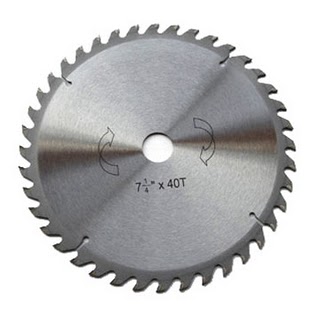
Wood – Tough fibrous substance obtain from a tree
Wood borer – A slow electric drill used to make holes with an auger bit
Wood brick – A fixing brick
Wood chipboard – Chipboard
Wood element – A wood cell, botanically called xylem
Wood flour – Fine sawdust, sometimes used as an extender for adhesives. It is also used in explosives as filler for plastic wood etc
Wood mosaic – A warm, resilient, decorative wood block flooring of strips of hardwood 7.5 mm thick and 115 x 25 mm, made up into squares, then put together in a basket weave pattern as panels 475 m square. A sheet of paper on its top surface holds each panel together. It is laid in bituminous adhesive and the paper is removed after laying
Wood primer – The first coat of paint on new wood, it should have the right moisture content, with a clean, dry surface. The primer used must be compatible with any preservatives in the wood. Primer should be brushed on and all end grain double primed
Wood roll – A joint between bays of supported sheetmetal roofing hand made by folding the edges upwards on a sloping-sided or round-topped wood core. The joint is weatherproofed either by lapping the sheets to form an undercloak and overcloak (with a splash lap) or by turning up the edges and nailing down a capping
Wood screw – A steel screw with a tapered gimlet point, a straight shank, and a countersunk, raised or dome head, traditionally with a straight slot
Wood slip – A fixing fillet
Wood turning – The skilled work of cutting wood to shape as it is spun round in a lathe, using chisels or gouges e.g. to make balusters
Wood-based panel products – Panel products made of wood particles, veneers or blocks, bonded together with adhesive, natural resins or cement They include building boards, such as flakeboard, waferboard etc
Wood-block flooring – A floor finish made of wooden flooring blocks, which usually have tongued and grooved edges. Blocks are 19 to 38 mm thick, up to 90 mm wide, and from 150 to 380 mm long.

Wood-boring weevil (Pentarthrum huttoni, etc) – A borer which forms shallow channels in damp timbers, particularly if decay is already present
Wood-cement particle board – A building board made of wood chips bonded with portland cement instead of resin based adhesives in normal wood chipboard. This helps it achieve a higher fire resistance rating. Both faces are smooth and suitable for most finishings, although it is mainly used for floating floors. It resists decay outdoors, if painted or sealed against rain, unlike chipboard bonded with urea-formaldehyde adhesives
Wood-heater – A room heater made to burn wood. The wood should be as dry as possible, when it gives off most heat and does not blacken the glass in the fire door
Woodwool slab – A panel product made of long thin strands of wood that are mixed with cement and compressed in a mould to bind them together. Woodwool slabs are mainly used for roof decks or wall cladding, giving fire resistance as well as heat and sound insulation. Another use is permanent formwork
Woodworking machines – Bench mounted or stand alone power tools for shaping wood, such as doweller, mitre saw, mortising machine etc
Woodworm – A borer usually the common furniture beetle
Work edge – The face edge of timber
Work section – A chapter of a specification that may describe a complete trade or a job done by a specialist sub-contractor
Workability – How hard or easy a material is to cut, shape, drill etc
Working – The swelling or shrinkage of timber causing movement as its moisture content becomes higher in winter and lower in summer, from changes in the relative humidity of air and/or;
Shaping materials by cutting, grinding, bending or folding if they are hard or by moulding, screeding, floating or toweling if they are wet or plastic
Working life – The time, during which a product can be used after it has been mixed, before it sets or its curing system has been activated. Examples of product with working lives are adhesives, two part paints, sealants etc
Working space – Clear space around a equipment or a machine to allow access and movement
Working-up – The processing of data from taking-off. These are the two main stages in preparing bill of quantities. Working-up includes abstracting and billing
Worm hole – The hole left in wood by a borer, either a small pinhole or a larger shothole

Wrapping fabric – Lightweight steel fabric bent round steelwork before the concrete encasement is put on, to hold it in a fire
Wrapping tape – Tape of plastic or fibre with sticky waxes, wound round buried or severely exposed steel pipes to protect them against corrosion
Wreath – That part of a stair handrail which is curved both on plan and in elevation
Wrecking – Demolition
Wrench – A spanner, usually adjustable
Wye Wye – A drain pipe fitting with a straight run and two inlet branches in the shape of the letter Y
This Dictionary is an invaluable guide for anyone interested in Architectural / Construction Activity. Click on the alphabets given below, for the word you are looking for.


Hey, I just hopped over to your site via StumbleUpon. Not somthing I would normally read, but I liked your thoughts none the less. Thanks for making something worth reading.
Nice work on your blog here. I too am trying to build a blog for my small home remodeling company. Its a long story, but I’m not very good at this nerdy stuff. I like the site theme you have used here and was wondering what it was named? I bought Thesis but after about 2 weeks…I just gave up. It was way too complex for my simple mind. I want to supplement my income in the cold winter months and thought I could do it by blogging. Its going to be a long road ahead. Anyway, I just stumbled across your site here and am glad to have met you. virtually of course :-).